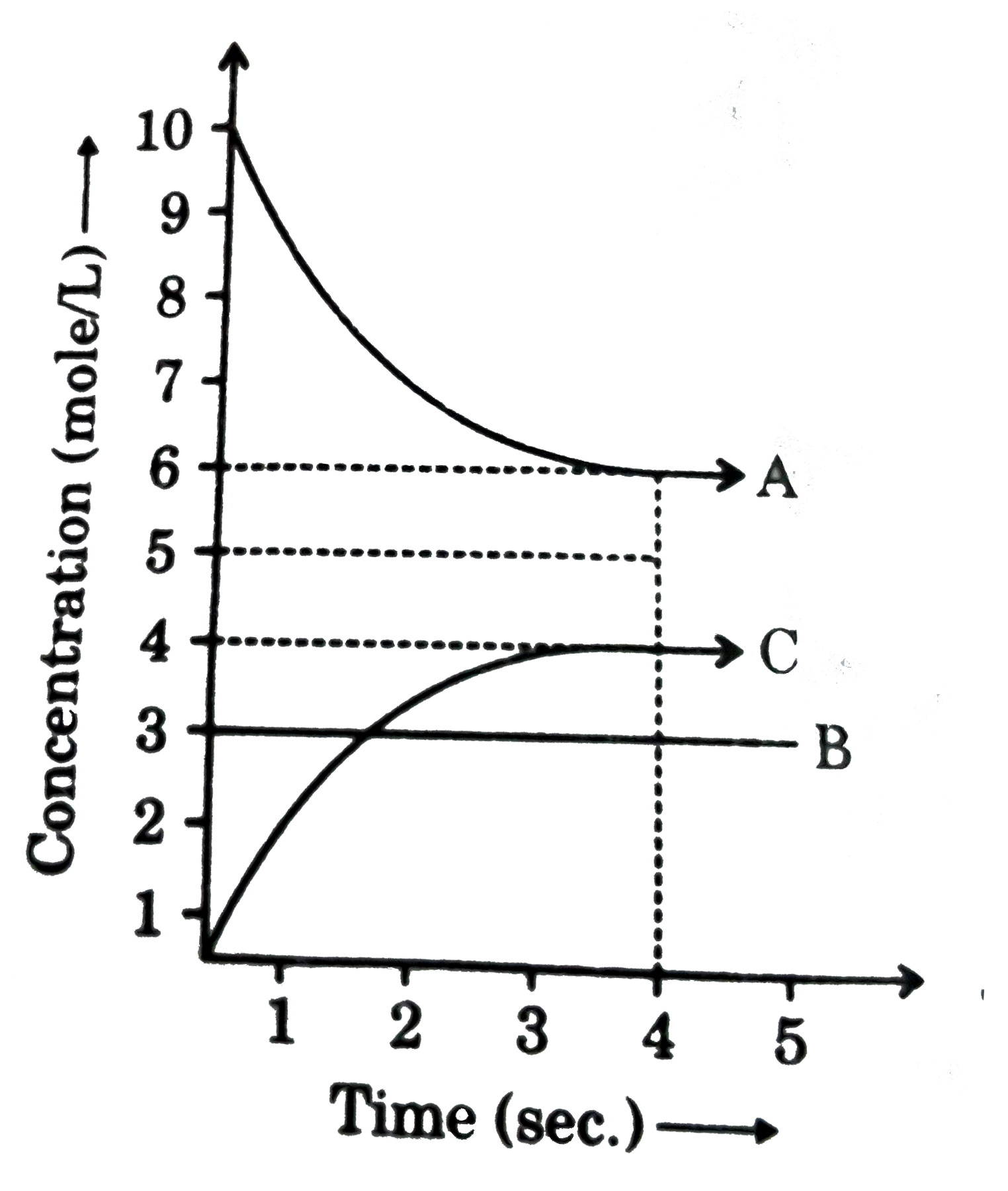X, Y and Z react in the 1:1:1 stoichiometric ratio.
The concentration of X, Y and Z we are found to vary with time as shown in the figure below:

If the above equilibrium is established in a 2.0L container by taking reactants in sufficient amount then how many moles of components Y must have reacted to establish the equilibrium?
0
6
12
8
The correct Answer is:D
X(g)+Y(g)⇐⇒Z(g)moles leftatt=tEq6×2=124×2=8
To get 8 moles of Z, moles of Y reacted =8
Topper's Solved these Questions
- BOOK - CENGAGE CHEMISTRYCHAPTER - CHEMICAL EQUILIBRIUMEXERCISE - Exercises (Multiple Correct)26videos
CHEMICAL EQUILIBRIUM
- BOOK - CENGAGE CHEMISTRYCHAPTER - CHEMICAL EQUILIBRIUMEXERCISE - Exercises (Single Correct)58videos
CHEMICAL EQUILIBRIUM
- BOOK - CENGAGE CHEMISTRYCHAPTER - CHEMICAL EQUILIBRIUMEXERCISE - Exercises (Subjective)46videos
CHEMICAL EQUILIBRIUM
- BOOK - CENGAGE CHEMISTRYCHAPTER - CHEMICAL BONDING AND MOLECULAR STRUCTUREEXERCISE - Archives Subjective15videos
CHEMICAL BONDING AND MOLECULAR STRUCTURE
- BOOK - CENGAGE CHEMISTRYCHAPTER - CLASSIFICATION AND NOMENCLATURE OF ORGANIC COMPOUNDSEXERCISE - Analytical and Descriptive Type3videos
CLASSIFICATION AND NOMENCLATURE OF ORGANIC COMPOUNDS
Similar Questions
The equilibrium concentration of x, y and z are 4,2 and 2 mol L−1, respectively, at equilibrium of the reaction 2x+y⇔z. The value of Kc is ……………..
View SolutionA,B and C react in the 1:1:1 stoichiometric ratio. The concentration of A,B and C where found to vary with time as shown in the figure below:

Which of the following equilibrium reaction represents the correct variation of concentration with time?View Solution
Knowledge Check
- Question 1 - Select One
A,B and C react in the 1:1:1 stoichiometric ratio. The concentration of A,B and C where found to vary with time as shown in the figure below:

The value of equilibrium repreasented in above sketch will be :A127B23C2D29 - Question 2 - Select One
X, Y and Z react in the 1:1:1 stoichiometric ratio.
The concentration of X, Y and Z we are found to vary with time as shown in the figure below:

Which of the following equilibrium reaction represents the correct variation of concentration with time?AX(g)+Y(g)⇔Z(g)BX(g)+Y(s)⇔Z(g)CZ(g)+Y(g)⇔X(g)DZ(g)+X(g)⇔Y(g) - Question 3 - Select One
X, Y and Z react in the 1:1:1 stoichiometric ratio.
The concentration of X, Y and Z we are found to vary with time as shown in the figure below:

The value of the equilibrium constant (Kc) for the equilibrium represented the in above sketch will beA92B114C23D107
The initial concentration of X and Y were 2 and 4 mole / L respectively . For the following equilibrium X+2Y⇔Z which of the following relationship among equilibrium concentrations of x , y and z is not feasible ?
View SolutionThe initial concentration of X and Y were 2 and 4 mole / L respectively . For the following equilibrium X+2Y⇔Z which of the following relationship among equilibrium concentrations of x , y and z is not feasible ?
View SolutionX, Y and Z have been sharing profits in the ratio of 4:2:1 Z retires. X and Y take Z's share equally. New profit sharing ratio will be:
View SolutionOne mole of X and Y are allowed to react in a 2L container when equilinrium is reached the following reaction occurs 2X+Y⇔Z. If the concentration of Z is 0.2M calculate the equilibrium constant for this reaction
View Solutionx and y moles/litre of A and B respectively were allowed to react A+2B⇔12C. At equilibrium, the concentrations of A, B and C were found to be 4, 2 and 2 moles/litre respectively, x and y are
View Solution

